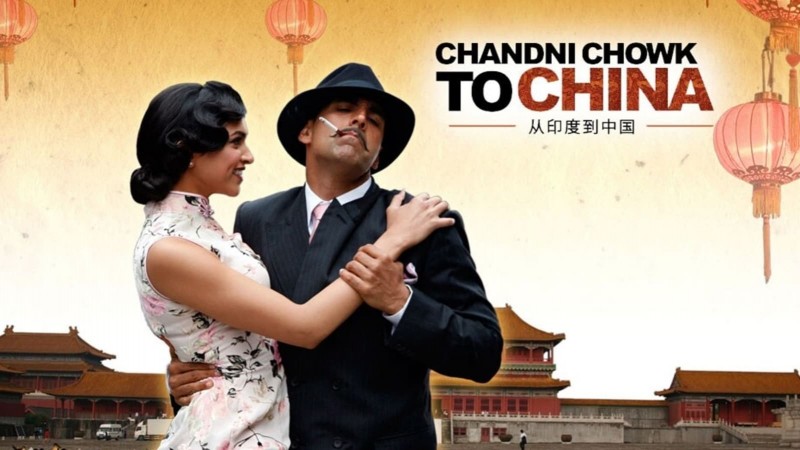
Intriguing tales of growth and transformation are a recurrent feature of the cinematic universe. One such narrative is found in the Bollywood hit film "Chandni Chowk to China." Its original name was "Mera Naam Chin Chin Choo," and the movie is well-known for its distinctive fusion of Indian and Chinese cultures. In this article, we delve into the enthralling background of the movie's title, tracing its development and examining the effects of the change on the plot and reception of the movie.
The movie was initially going to be called "Mera Naam Chin Chin Choo," a name that echoed with enigmatic charm. The title was originally "Chandni Chowk to China," but the filmmakers changed it before the film's release. The title change was not merely a marketing ploy; rather, it represented a more substantial narrative and thematic transformation that the movie underwent during production.
The original title, "Mera Naam Chin Chin Choo," referred to Bollywood's bygone era and brought to mind old Hindi film classics. It's interesting to note that the name of the film was inspired by a hit song from the Ashok Kumar and Madhubala movie "Howrah Bridge," which was released in 1957. Hindi film fans still have warm memories of Geeta Dutt's song "Mera Naam Chin Chin Choo," which was an instant hit.
This title was not selected randomly. It perfectly captured the movie's original vision, which was largely focused on Bollywood's golden age, complete with song-and-dance routines, melodrama, and traditional Indian storytelling. The movie was set to be a classic Bollywood melodrama, full of the cultural cues that had characterised Indian cinema for decades.
But as the movie's development went on, the directors' creative vision changed. They started to imagine a narrative that was not constrained by conventional Bollywood tropes but rather one that cut across cultural barriers. This change gave rise to the new moniker "Chandni Chowk to China."
The phrase "Chandni Chowk to China" has several symbolic meanings. Old Delhi's bustling Chandni Chowk serves as a symbol of the vibrant culture of India. China, on the other hand, is a country rich in history and tradition that differs greatly from India in many ways. The movie aimed to investigate the themes of cultural diversity, unity, and the spirit of adventure by bridging these two utterly dissimilar worlds.
The title change wasn't just a cosmetic change. It had a significant impact on the story and themes of the movie. In addition to showcasing the fusion of Indian and Chinese elements, "Chandni Chowk to China" embraced a cross-cultural narrative that personified the idea of people overcoming cultural barriers to find common ground.
After the title was changed, the movie's plot evolved into a delightful fusion of Indian and Chinese elements. Sidhu, the lead character, is a simpleton from Chandni Chowk who learns that he is the reincarnation of a Chinese warrior (Akshay Kumar). He sets out on a journey to China, where he encounters cultural clashes, martial arts, and a titanic conflict with a wicked antagonist. The narrative of the movie was driven by this blending of cultures, which made for a distinctive cinematic experience.
"Chandni Chowk to China" celebrated the concept of diversity while remaining united. The movie emphasised that despite cultural differences, there is a bond between people that cuts across national boundaries. The quest for unity was symbolised by Sidhu's journey, which struck a chord with viewers from all walks of life.
"Chandni Chowk to China" received a range of reviews from critics after its release. Some praised its bold attempt to meld Chinese and Indian elements, while others criticised its execution. The movie's box office performance, which reflected the audience's appreciation for its distinctive story, was nevertheless respectable.
The film "Chandni Chowk to China" will be remembered for its innovative attempt to break the conventional Bollywood mould, not for its critical acclaim. It established a model for intercultural storytelling in Indian cinema, opening the door for additional works that delve deeper into the complexities of globalisation and cross-cultural interaction.
In and of itself, the story of "Mera Naam Chin Chin Choo" becoming "Chandni Chowk to China" is gripping. It represents how Bollywood is constantly changing and how open it is to trying new things. More significantly, the title change signalled a change in the movie's main themes and plot, creating a work that celebrated multiculturalism and unity.
Even though "Chandni Chowk to China" wasn't a perfect work of art, Bollywood was forever changed by its foray into uncharted territory. It serves as a reminder that, like Sidhu's journey from Chandni Chowk to China, the world of cinema is also a dynamic and constantly changing adventure where change can result in surprising discoveries and unforgettable experiences.
Why Rani, Kareena, and Esha Never Share the Frame
Aamir Khan's Bollywood Journey Begins with 'Holi'The Untold Story of Priyanka and Shahid's Bike Incident in 'Kaminey'
Priyanka Chopra's Three Failures and One Phenomenal Comeback